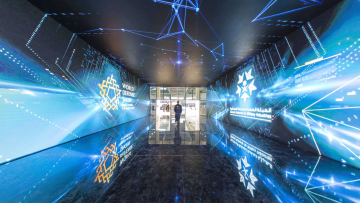Refocusing exhibitor sales with data

Refocusing the exhibitor sales conversation can’t happen without data
It’s easy to forget that digital marketing is a recent phenomenon. Twenty years ago Google Adwords didn’t exist, and the iPhone was still 7 years away. For many businesses, digital marketing wasn’t an option.
Back in 2000 exhibitions were a mainstay of the marketing mix. Where else could you find a large group of qualified interested prospects. And be able to speak directly with decision-makers, understanding and influencing the buying process.
This opportunity – to interact with industry decision-makers – made exhibitions unique in the marketing mix.
But in the last 20 years all that has changed. Digital continues to take a bigger and bigger share of the marketing budget. And there’s one key reason why.
Digital marketing is data-driven. It offers targeting, measurement, speed and scale unlike any other form of marketing.
For exhibitors, the key advantage of the trade show – a ready-made audience of interested buyers – has been slowly eroded. The visitor footfall past an exhibition stand is no match for the global reach and data-driven targeting that’s possible with SEM, display ads, and social media.
However, one advantage of exhibitions hasn’t been eroded – face-to-face interaction. It’s much easier to learn from visitors, understand their needs and their buying process, and to qualify them when you’re speaking in person.
This isn’t just the old-fashioned view of non-digital-natives. It’s borne out in the data. Sales leads gathered at events require less effort to close. Only 0.8 calls are needed to close a qualified trade show lead, compared to 3.7 calls to close a typical business sale.
Of course, even the face-to-face advantage may be eroded in the future. It might be holograms or it might be VR. Sooner or later remote interactions will be at less of a disadvantage.
But that’s still in the future. For the moment the advantages of face-to-face interaction at exhibitions are very real. The important question is whether it’s enough.
All the while the efficiency of data-driven digital marketing marches on. The advantages of that face-to-face interaction start to become insignificant when the data that sits behind digital marketing making the channel so attractive just isn’t available for exhibition marketing spend.
I don’t believe that exhibitions and trade fairs are going to disappear any time soon. I believe the desire of visitors to meet with suppliers and touch and feel products is too strong. And I believe that exhibitors get something special from those face-to-face conversations at trade shows that they won’t get any time soon in the digital world.
But what will happen is that exhibitors everywhere will apply the same data-driven thinking to their exhibition marketing spend as to their online spend.
Exhibitions that refocus their exhibitor sales conversation using reliable data will thrive. They’ll play to their strengths as the match-maker, bringing together the right people for meaningful and valuable face-to-face conversations. Importantly they’ll be able to demonstrate quantitatively the full value exhibitions bring to the sales pipeline, and why digital marketing isn’t the only show in town.
Those that don’t will find it harder and harder to compete.


